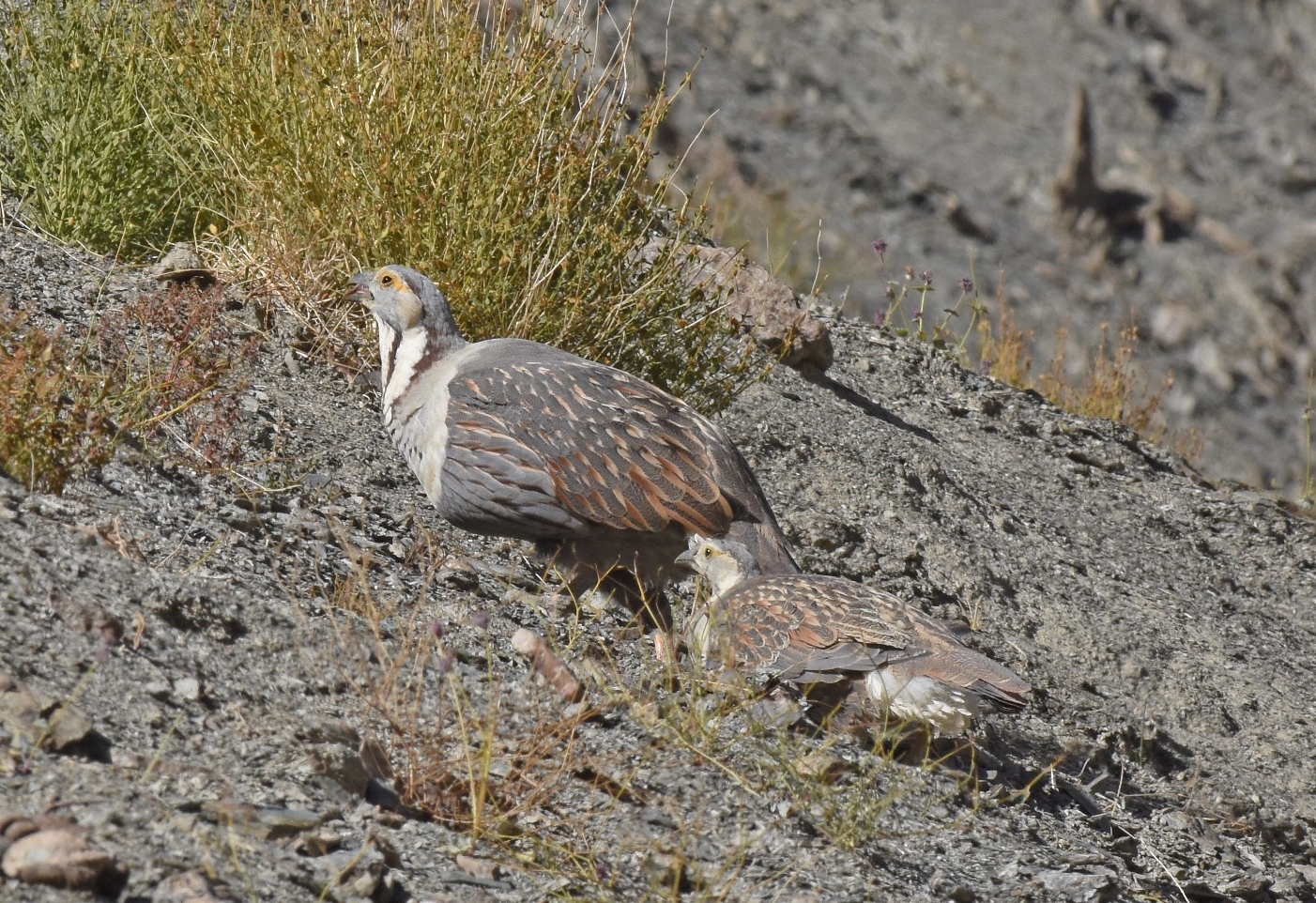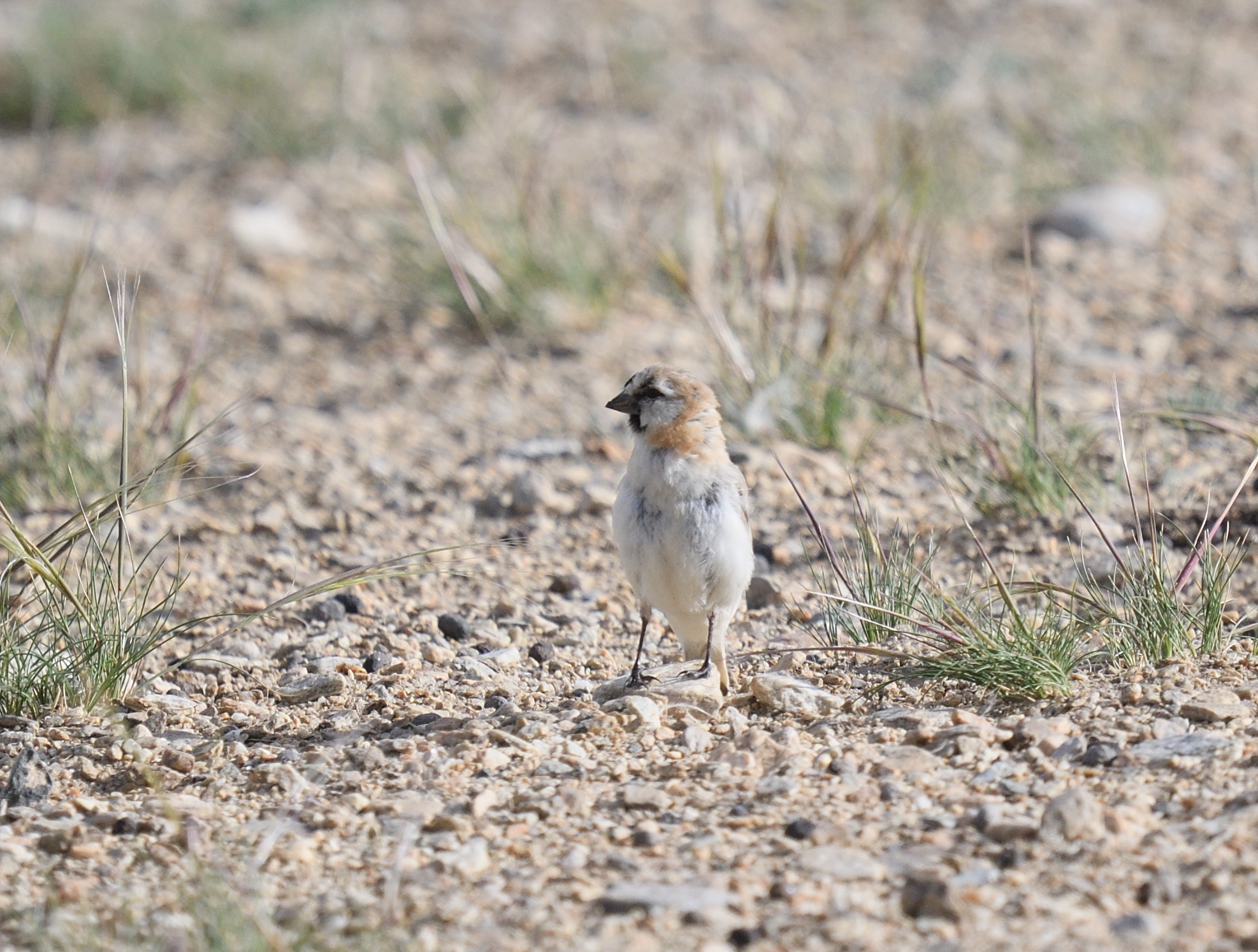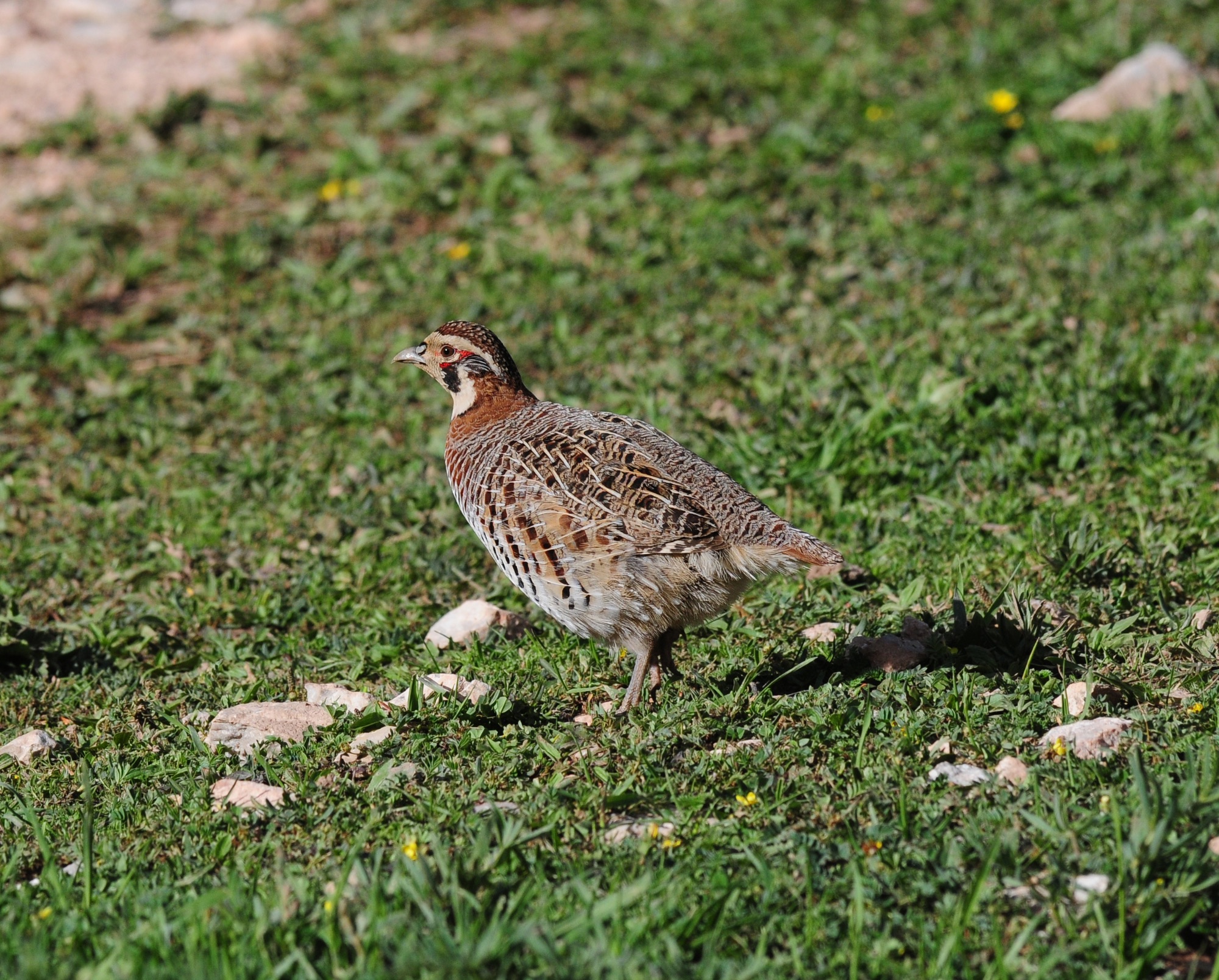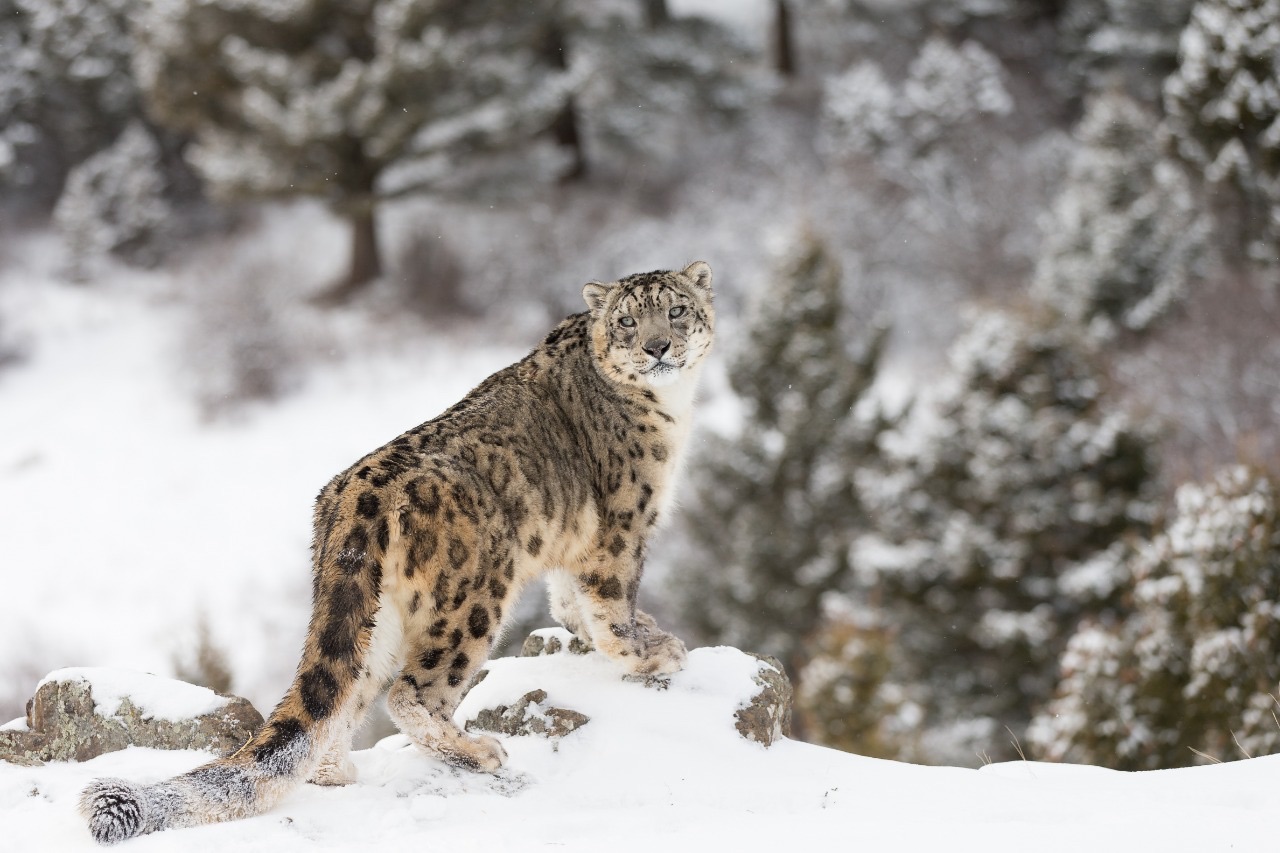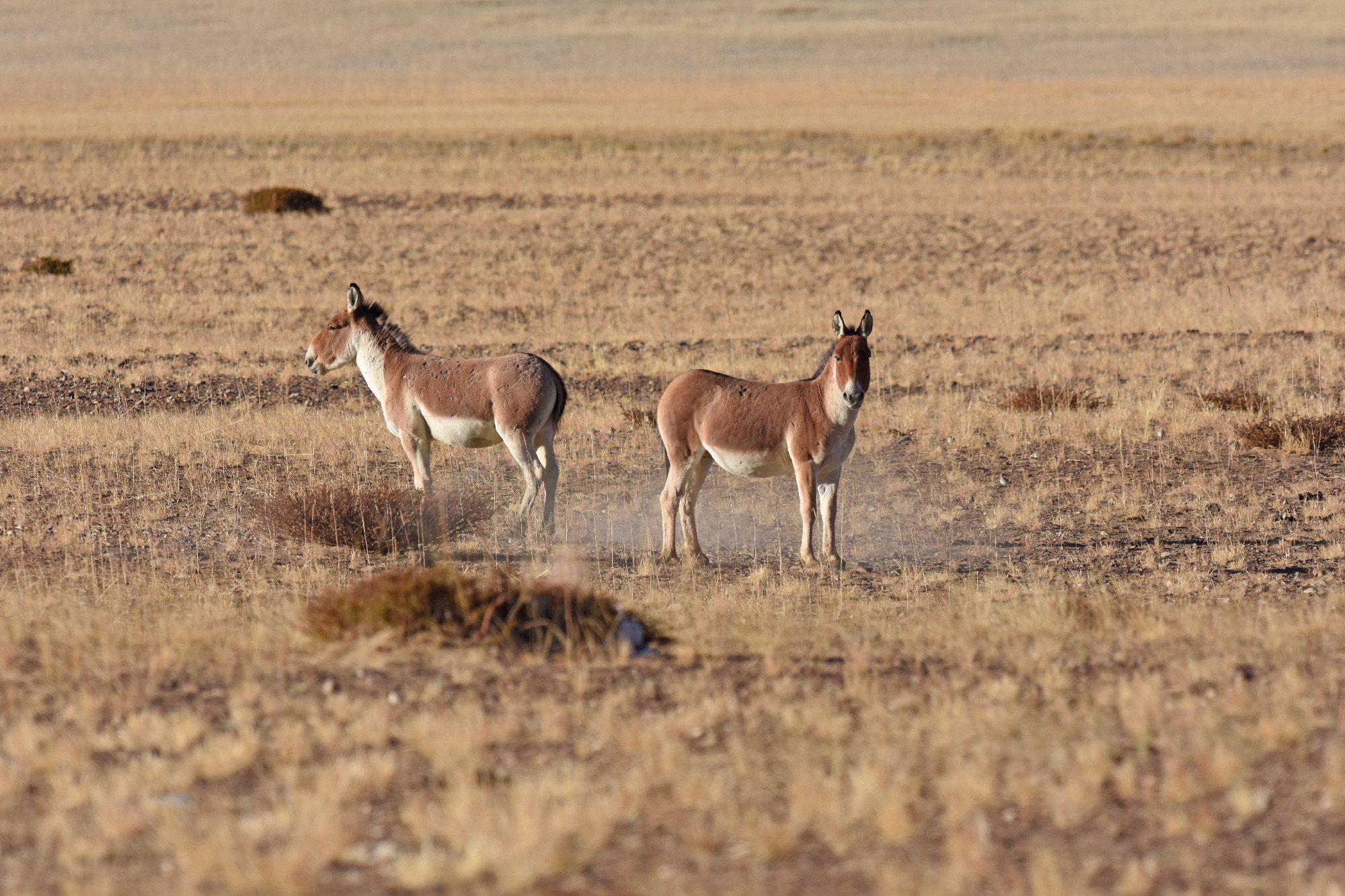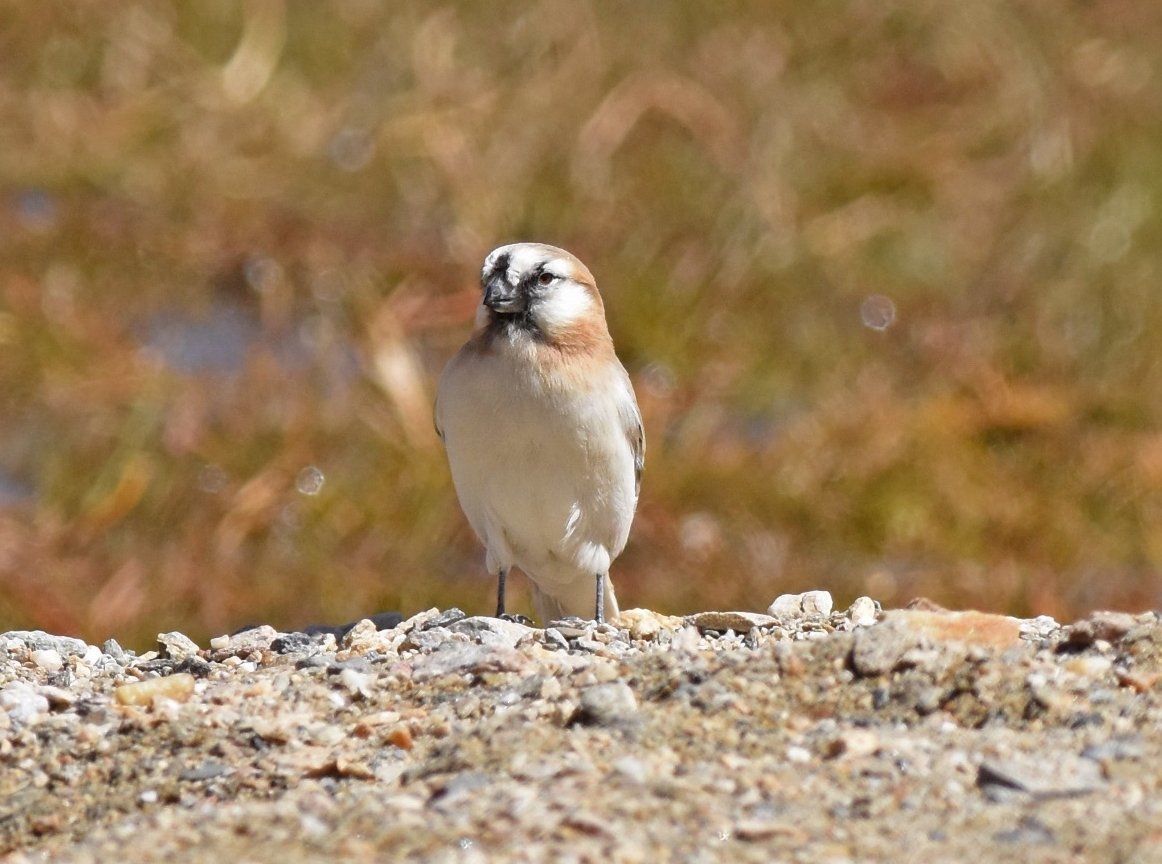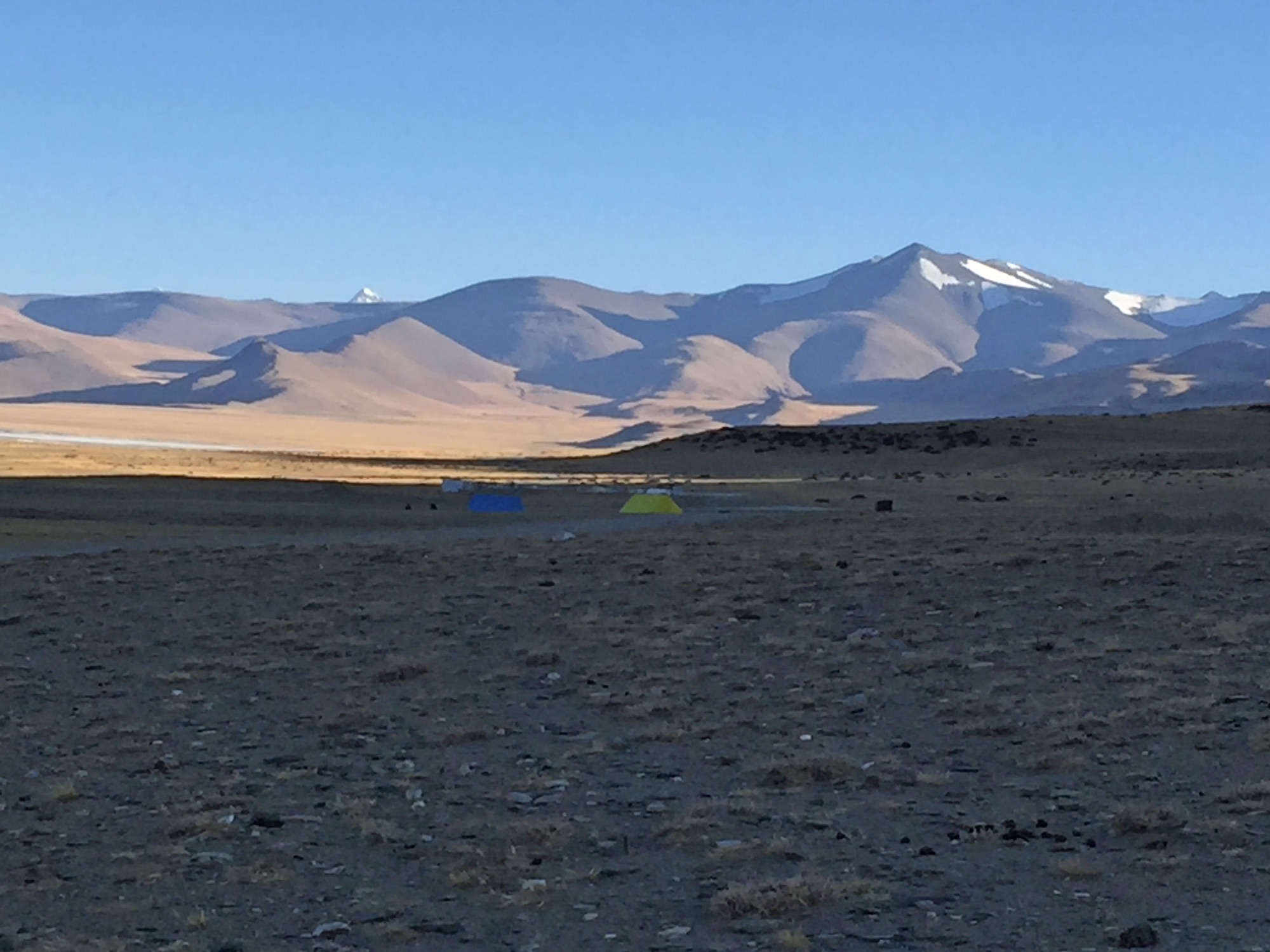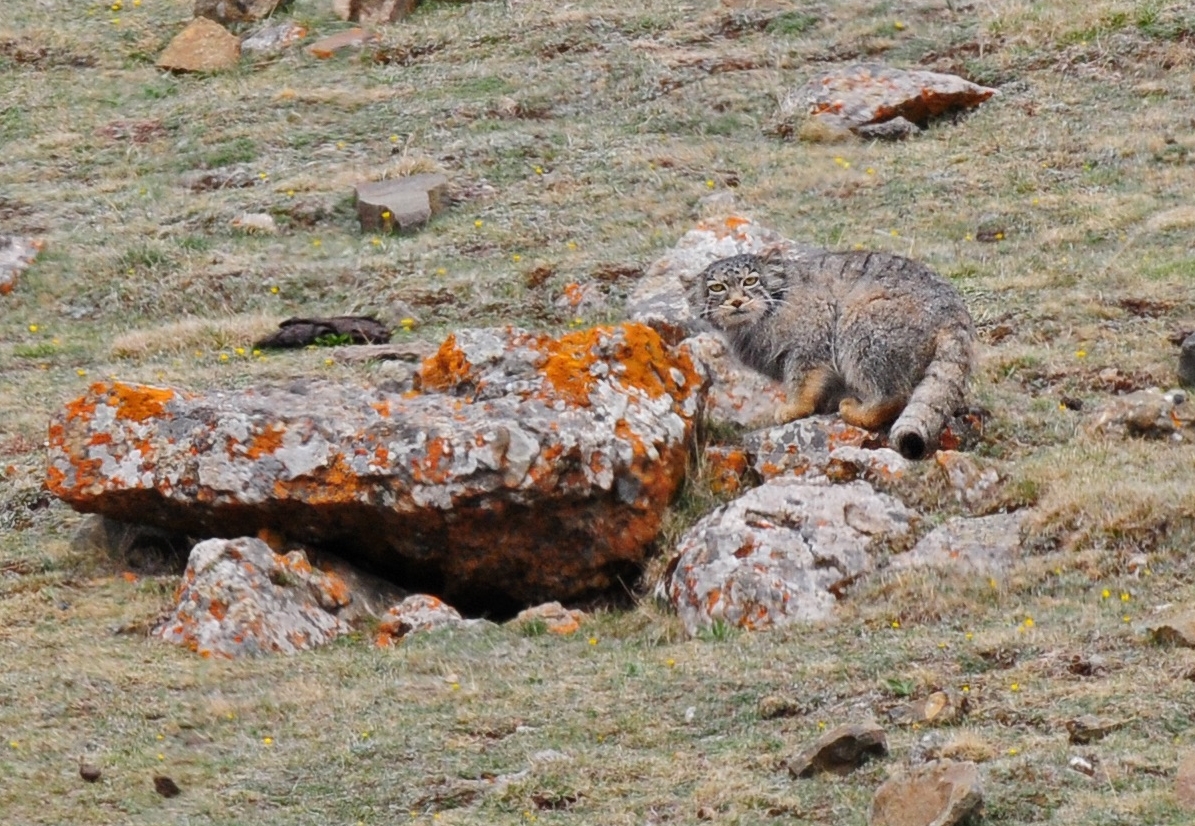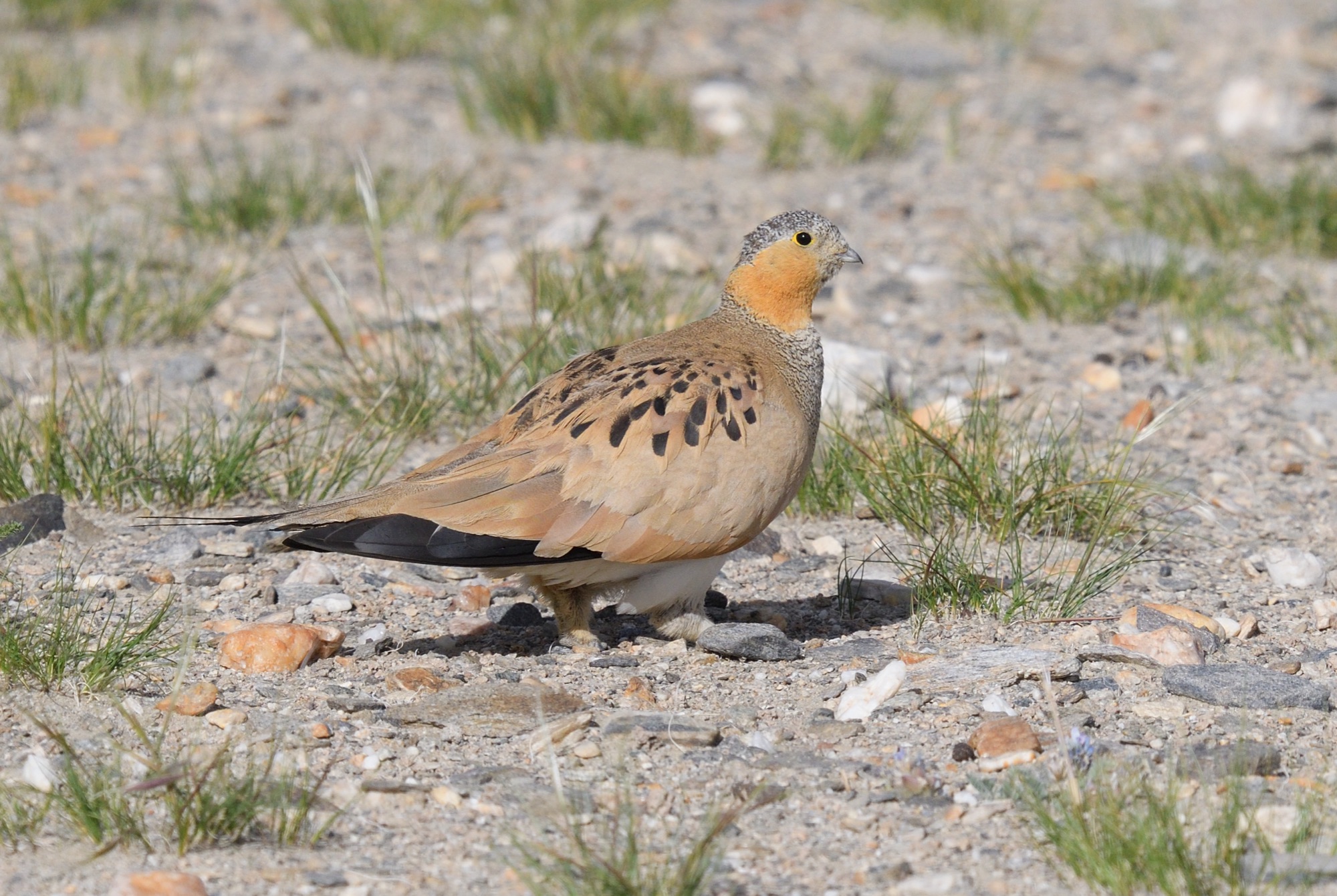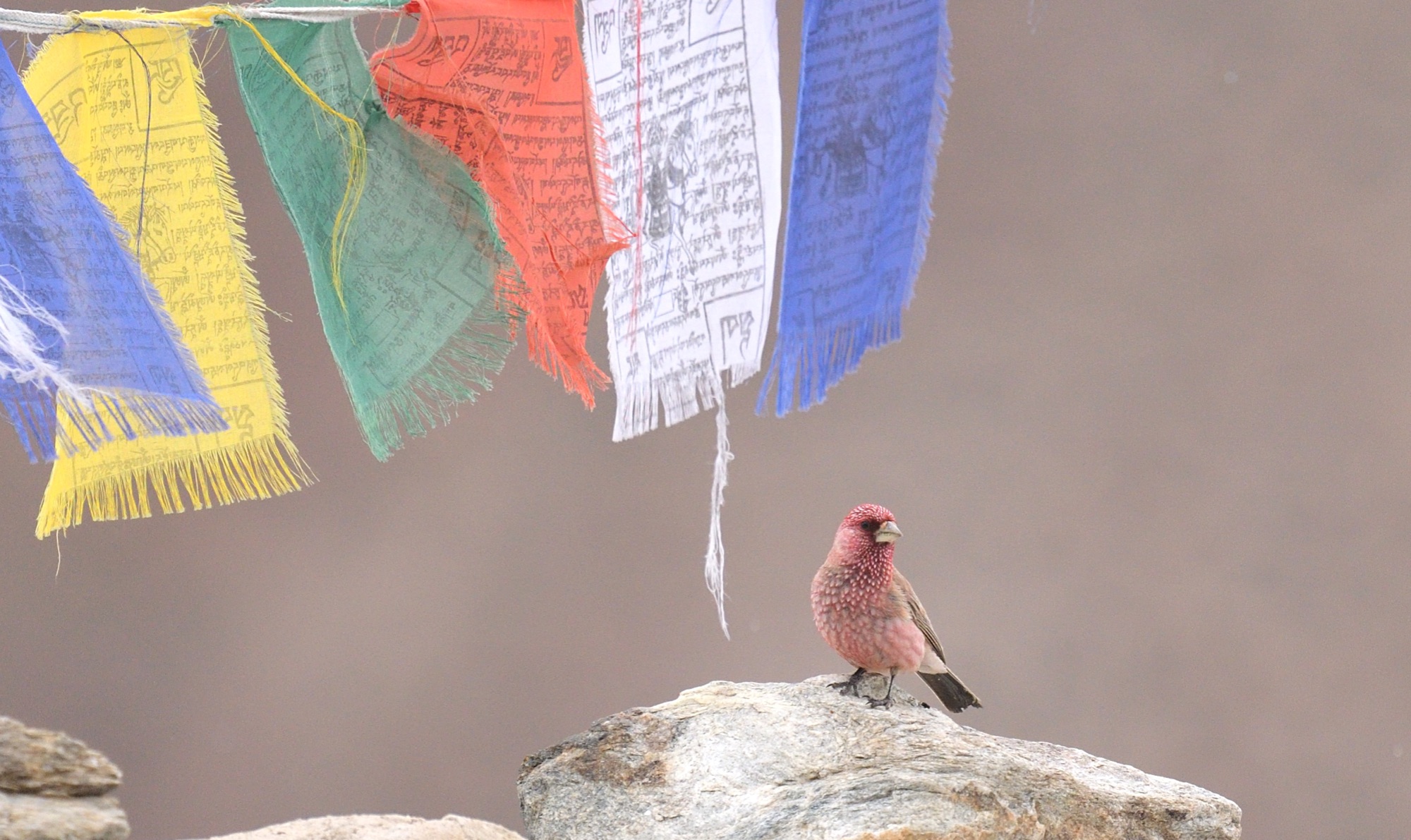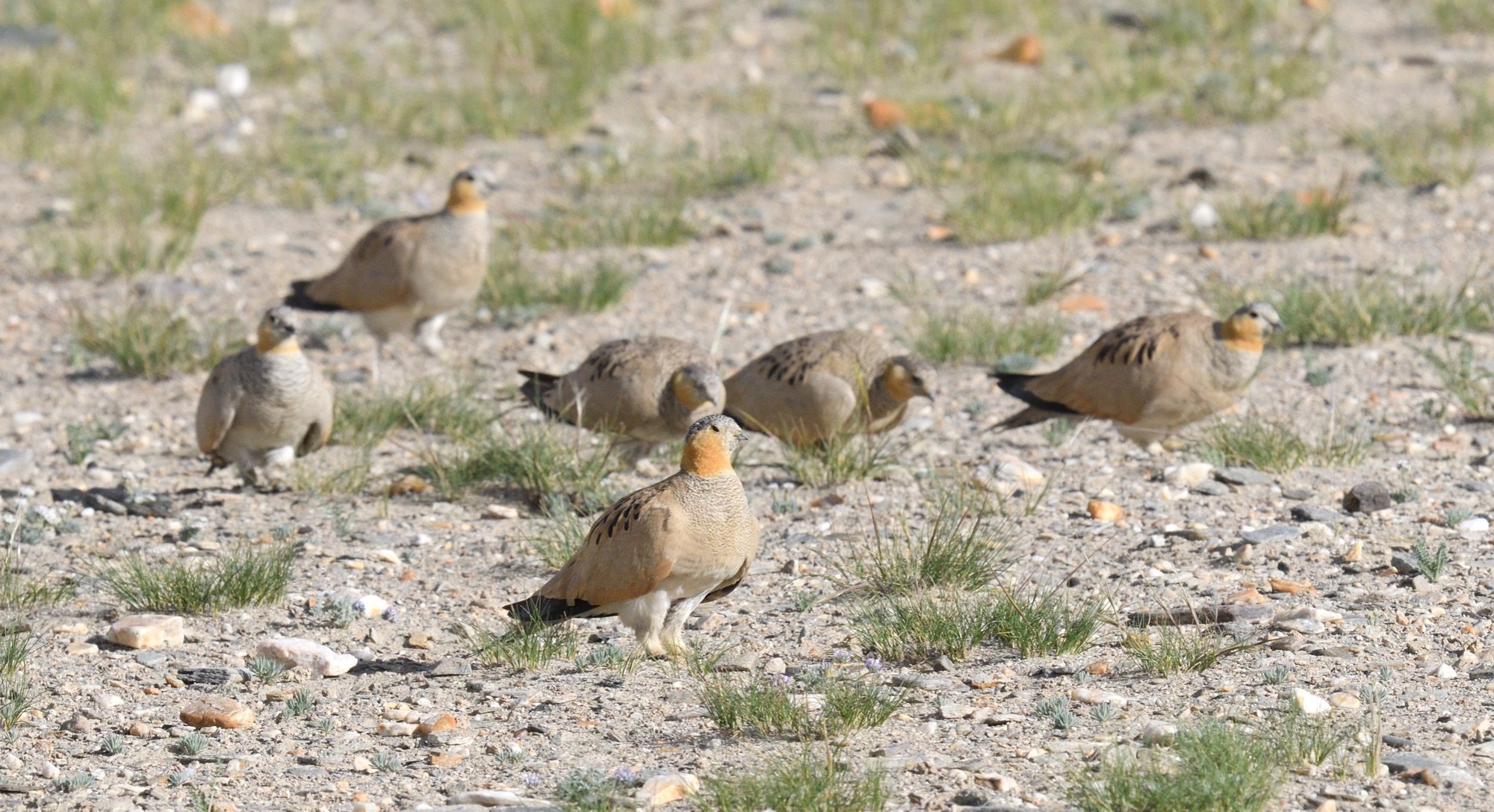SNOW LEOPARDS & BIRDS OF LADAKH
Day 1 Arrive Delhi - Monday 22nd Feb
Plan on arriving in Delhi today. You will be greeted at the airport and transferred to a nearby hotel for the night. The tour will commence at dinner this evening and we will have a briefing about the exciting adventure ahead. Night Delhi.
Day 2 Delhi - Leh
Early this morning we will transfer to Delhi airport for our flight to Leh. This must be one of the most sensational flights in the world as on a clear day from one side of the aircraft can be seen in the distance the peaks of K2, Nanga Parbat, Gasherbrum and on the other side of the aircraft, so close that you feel you could reach out and touch it, is the Nun Kun massif. Upon arrival in Leh we enter a different world and once through immigration we will be transferred to our hotel. Here we will take a little time to settle in and acclimatize since we have gone from a relatively low elevation in New Delhi to over 3,300m (10,800 feet) at Leh. After lunch you can either rest or for those too excited to rest we will take a trip to a nearby river in search of our first birds. Remember this primarily a rest and acclimatisation day but there is also the option to look around the old town, beneath the Leh Palace, where you can get oriented to this fascinating city. Overnight in a hotel in Leh.
Day 3 Leh
Today offers a full day of acclimatisation and for those that wish we will have an easy day looking for some of the key birds near to town. Our first goal will be the much sought-after Ibisbill, a bird that inhabits the rocky cold rivers running along the edge of Leh. Other birds along the river can include shorebirds most of us are familiar with such as Green and Common Sandpipers, as well as the very smart Masked Wagtail, Oriental Turtle Dove, Red-billed Chough, Mountain Chiffchaff and Cinereous Tit. We could also find Citrine Wagtail and Brown Accentor, but another of out target birds in this wet habitat is the difficult Solitary Snipe. Plenty of time will also be spent back at the hotel just relaxing and enjoying a cup or two of local tea while we get used to the altitude. Overnight in a hotel in Leh.
Day 4 Leh - Zingchan - Rumbak
After breakfast we will set off with all our bags and equipment in one or more vehicles towards Hemis National Park about an hours drive away. Following an exhilarating journey through the mountains to the end of the road at Zingchan we will meet our ground crew. Here we leave the vehicles and transfer all of our luggage onto a train of donkeys and ponies before beginning the slow walk into the Rumbak Valley to our camp in the heart of Snow Leopard country. We expect to take about 3 hours to walk to camp where our team will have already erected our tents, including kitchen tent, dining tent, toilet tent and this will be our home for the next 7 nights. The scenery all around camp is sensational and even without seeing any wildlife you just know you are in a very special place. Chukars and both Rock and Hill Pigeons will be around camp and Red-fronted Serins scout the area in small flocks, whilst the haunting call of Himayan Snowcock echo through the valleys and a Snow Leopard could be spotted at any time. Night in tented camp.
Days 5 - 10 Rumbak Valley
Each day in these beautiful picturesque mountains will see us with some sort of routine. We will get up for a nice warm breakfast in our heated dining tent, during this time our guides and spotters will already be out looking for signs of Snow Leopard activity and of course will alert us if they see anything. After breakfast we will have the choice of just hanging around camp or the nearby lookout, an area just a few hundred metres away from where we can scan the hillsides and mountain tops for the elusive Snow Leopard, or we can take a slow walk into one or other of the nearby valleys spending most of the day away from camp. Wherever we happen to be around lunchtime, some of our camp crew will arrive, with hot drinks, soup and a hot lunch. After this they will head speedily back to camp to get tea, coffee and biscuits ready for when we arrive back in the late afternoon. Our guides are expert trackers and they spend dawn til dusk looking not just for Snow Leopard but also other mammals such as the very rarely seen Eurasian Lynx or maybe Tibetan Wolf. Blue Sheep are fairly common and are the favourite prey of Snow Leopard, so we always pay particular attention to these. Depending on whether it has snowed or not this makes a difference to the tracking and indeed visual spotting of leopards, as they are a little easier to see and track with a light covering of snow, and the area looks even more spectacular with white mountain tops. On our daily walks we can hope to see birds such as Snow Pigeon, White-throated and Brown Dippers, Guldenstadt's Redstart, Red-fronted Serin, Rock Bunting and maybe flocks of Brandt's Mountain-Finch and even Tibetan Snowfinch. Twite are fairly common, Lammergeier can be seen nearly every day, Himalayan Griffon Vulture, Golden Eagle, both Streaked and Great Rosefinches, Robin, Black-throated and Brown Accentors are never far away, while Himalayan Snowcock and Tibetan Partridge can also be found. White-browed Tit-Warbler, Sulpher-bellied Warbler and Wallcreeper are present in the rocky gorge below camp but both can be elusive and Upland Buzzard and Saker can sometimes be seen overhead. Ladakh Urial, Royale's Pika, Mountain Weasel and Stone Martin are possible and with luck we should enjoy views of one of the most mystical and spectacular cats in the world, the Snow Leopard. With plenty of time to look for the Grey Ghost we are hopeful to secure at least one view and maybe multiple views which then puts you in a very elite group of people to have ever seen this awesome creature. At the end of each day we often spend a little time at the lookout beside our camp before the sun drops along with the temperature and hot drinks call back at the dining tent. A wonderful dinner will have been prepared throughout the day and we will enjoy this while going over the days story of what we did and didn't see. At night we will have a hot water bottle to take to bed. Nights in camp.
Days 11 - 12 Rumbak - Tso Kar
Later this morning after a final look for Snow Leopard we will trek back to Zingchan and then drive to Tso Kar. This route will see us cross a couple of very high passes where sometimes Tibetan Snowcock can be present, before dropping down to the spectacular plains of Tso Kar. Unlike our last visit, we do not have to camp but instead stay at the Tso Kar Resort. There are some very special birds to be found around the lake, with pride of place going to the awesome Tibetan Sandgrouse. We will listen for their far-carrying distinctive calls and hopefully spot a flock of them flying down to the fields surrounding the lake. They can take some finding but this is possibly the best place in the world to see this enigmatic species. Other birds present include the majestic Black-necked Crane which should hopefully have returned from their wintering area, Hume's Short-toed Lark, Blanford's Snowfinch, Red and Yellow-billed Choughs, the superb Hume's Groundpecker and sometimes Mongolian Finch can be present. Evening is a good time to search for mammals and we can hope to spot the local Grey Wolf family patrolling the surrounding hills, whilst even Pallas's Cat has been found here on a couple of occasions. There is also a healthy population of Tibetan Wild Ass (Kiang) present around the lake and we should get some very good views of this entertaining animal, whilst Tibetan Argali are sometimes seen in the nearby hills. 2 nights at Tso Kar Resort.
Day 13 Tso Kar - Leh
After a final morning in this wonderful valley searching for more birds and mammals we head back to Leh. Night in a hotel in Leh.
Day 14 Arrive Delhi - End of Tour - Sunday 7th March
Today we will transfer to Leh airport for our morning flight back to Delhi where depending on your international flight departure time you will either be transfered to Delhi airport or go to a nearby hotel to spend the night where you will then depart from Delhi the following day. Night in Delhi.
All photos copyright Nick Bray/Zoothera Birding unless otherwise stated.
Top row: scanning for Snow Leopards, Himalayan Snowcock, Blannford's Snowfinch
2nd row: Tibetan Partridge, Snow Leopard copyright Asian Adventures, Kiang
3rd row: Blanford's Snowfinch, Tso Kar scenery, Pallas's Cat
4th Row: Tibetan Sandrouse, Great Rosefinch, Tibetan Sandgrouse


